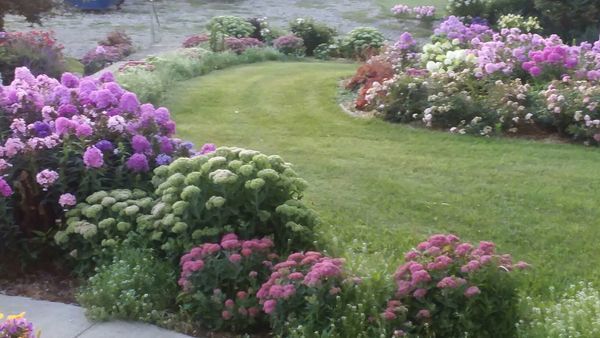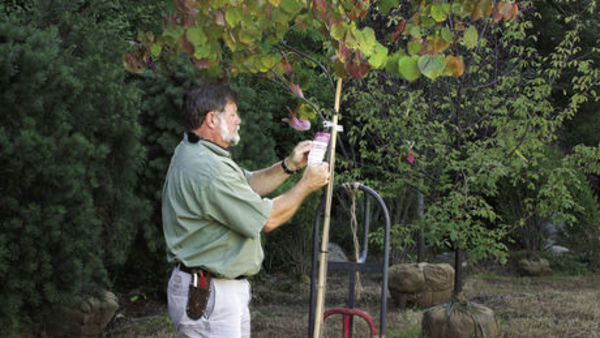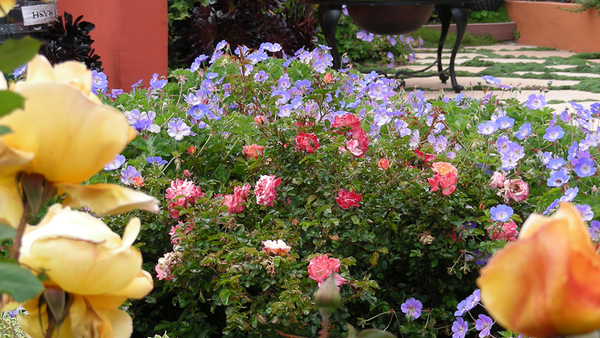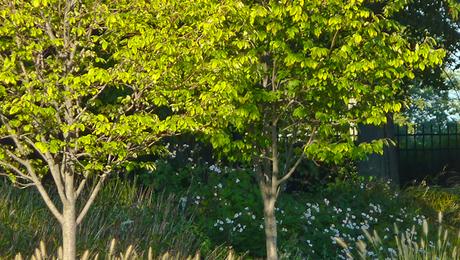
Looking Under the Hood – Hardscape and Infrastructure
After the enchantment of a splash of curb appeal wears off, it’s time to look where you’re walking – literally. When you look at the paths, consider whether they’re up to the job they’re designed for: Stepping stones or gravel are fine for a casual stroll but not the best choice for rolling out the trash bins or carrying laundry and groceries to and from the car. Decomposed granite just outside a room with hardwood floors? I don’t think so.

Is the patio level and crack free or does it look like the ground underneath is still settling? The same goes for retaining walls and stucco or block walls. These are big ticket items to repair or replace.
Inspect anything constructed from wood to see if it’s sound. Fence and shade-structure posts that come in direct contact with the soil are more likely to be affected by rot or termites, if not now, eventually.
Are there utilities that service the garden? Lighting systems should be test-driven after the sun goes down. Check whether there are enough electrical outlets in the right places or you might have to rely on lots of extension cord for your tools. And where’s the most convenient point of connection for that gas fire pit you’ve been dreaming about? Digging a new trench to the front of the house could be cost-prohibitive.

If you’re buying in a part of the country where irrigation systems are par for the course, ask the seller to fire it up and look for leaks, overspray and coverage gaps. If it’s run by an automatic controller, is it a state-of-the-art “smart” controller that adjusts to real-time changes in the weather saving lots of money on your water bill? If not, put that on your list of improvements.
Safety First
Your family’s and your safety should be top priority. Moving around your garden need not require extreme vigilance at every step: Solid, level, slip-resistant surfaces, sturdy hand-rails, clearly marked elevation changes and guard rails or dense plantings where falls are possible will ensure your well-being. Properly designed lighting allows you to enjoy your garden after nightfall and gives you peace of mind when approaching your front door after dark, or finding your way to the trash cans.
 |
 |
I live along California’s Central Coast, where, like many western states, wildfires are part of the natural ecology. Unfortunately, this is also where people love to build homes. Houses and gardens in high-risk areas need to pay special attention to what fire experts call “defensible space” – conceiving planting designs to avoid fuel build-up, especially close to the house. Plantings packed around the foundation might look quaint, but they also carry flames to your door. Same goes for trees with branches too close to the house. Read my May 13, 2009 post for specific ideas about what constitutes a fire-safe landscape.
Also, see if you can make observations about where water flows when a gully washer of a storm comes your way. Plantless, eroded slopes or telltale silt deposits are a sign that more water is running across the soil than can be absorbed. Sometimes it merely results in the annoyance of having to sweep debris from the paths, but you might also be looking at the start of a bigger problem. Consider the services of a civil or soils engineer for assurance.
What ‘Choo Lookin’ At?
“Okay, Billy,” you might be thinking. “Enough with the not-so-sexy stuff. What about just plain good looks?”

I get it, so here are a few morsels to chew on. If the yard around the house is more or less a blank slate, there’s not much you have to adapt your taste to. Yes, there are probably plants on neighboring lots that you can respond to (or try to make go away). For the most part, the good news is you can have your way. On the other hand, you’ll have to shell out for all the plants. Just turn your own sense of style loose and make the garden your own.
If, however, you’re inheriting an established garden, there are two big questions: 1) Can you work with what’s already there? Do the colors please you? Is there enough variety and contrast in the forms and foliage? And 2), if you’re not thrilled with the current owner’s gardening vision, what can you keep and work with and what has to go? You don’t have to make all your changes at once, but it’s helpful to develop a master plan you can work toward, bit by bit.
Click through
Read Part 3 to learn about how check for how environmentally friendly the new garden is, tree issues and how your neighbor’s garden might affect yours (and vice versa). Return to Part 1.





















Comments
Log in or create an account to post a comment.
Sign up Log in